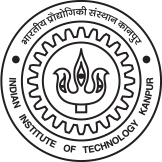
Prerequisites:
3-0-0-9
Course Contents
Symmetry and Group Theory: Group multiplication table, elements of a symmetry group, symmetry group classification, characters, group representation, The Great Orthogonality theorem, basis of representation, wavefunctions as bases of IR representations, symmetry adapted linear combinations, direct products, spectral transitions (15)
Interaction of light with matter, Einstein’s coefficients, relationship of Einstein’s coefficients with transition moments (no derivation) and transition probabilities, oscillator strength. Beer-Lambert law, relationship between Einstein’s coefficients and total absorbance. Born-Oppenheimer approximation, energy levels, potential energy curves, MO and term symbols, Franck Condon principle, symmetry and selection rules, spin and parity forbidden transitions, vibronic interaction. (8)
Simple harmonic motion, anharmonicity, introduction of different coordinates (generalised, mass weighted generalized, internal and normal coordinates). Force constants, selection rules, (F and G matrix if time permits). Applications: Organic molecules, functional group versus frequency approach, Fermi resonance, frequency shifts because of substitutions, isotope effect., theory and application of Raman Spectroscopy (15)
Other spectroscopic methods like Mass Spectrometry, Magnetic Resonance, Photoelectron Spectroscopy (4)
Topics
Current Course Information
Instructor(s):
Number of sections:
Tutors for each section:
Schedule for Lectures:
Schedule for Tutorial:
Schedule for Labs:
Books and References
Chemical Applications of Group Theory- F.A. Cotton
Theory and applications of UV spectroscopy. –H.H. Jaffe and M. Orchin.
Quantum mechanics, Cohen-Tannoudj, Diu and Laloë (2005)
Molecular Spectroscopy –I. N. Levine
High Resolution NMR, theory and application, E.D. Becker
Modern Spectroscopy –J. M. Hollas



